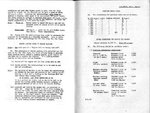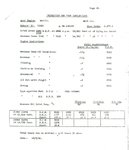Glider
Major
Certainly a just as wishful claim as the one that all RAF fighters were using 100 octane fuel in the BoB.
Kurfurst I was only looking at the site that you gave me. One important thing is that I was using the servicable aircraft number as thats the important one. It reflects whats available for action.
Or are you saying that a drop from
from 856 Operational 109's and 906 pilots at the end of June
down to 586 operational aircraft and 711 ready pilots at the end of December doesn't represent a significant fall?
However there were 711 planes operational down from 856 at the end of June which is a decent drop,Looking at the strenght reports, on 28.09.40 (a day after some very heavy combat and losses btw) the LW day fighters reported 920 fighters on strenght and 917 pilots.
Fair pointOn 28 December 1940 they reported 829 fighters and 915 pilots. The number of fighter pilots remained unchanged compared to September, in fact many were back to Germany and on leave, while the units were prepearing to receive the new 109Fs. This explains the low servicibility numbers for the end of December, that is effected by some units reporting 0 servicable aircraft, ie.
Stab/JG51, I./JG51, II./JG51, III./JG51 curiously reporting 0 Bf 109Es ready for operation out of the 46 present, while II./JG54, that was almost on full strenght with 35 aircraft reported again with 0 mission capable aircraft. Which is more than just odd. Not one, not half of them, none.
Obviously these units were in the process of rest and refit, and units were busy creating their own operational training units, to which they transferred to old aircraft, and awaiting the new 109Fs.
However in March 1941 they still only had 814 Servicable Aircraft, less than in June 1940, even less than Sept 39. Not impressive.On the 29 March 1941, they were reporting 1104 aircraft present, with much of the frontline strenght now consisting of the new 109Fs, with much of the Emils retired, and the last batches of them running out of the production line, and 1204 pilots.
The paper trail is clear and well documented I don't know how you can cling on to such a fantasy. However can I ask where you got the 16+2 squadrons from in the first place as they are not mentioned anywhere.What isn't at doubt that originally only 16+2 Squadrons were meant to receive 100 octane fuel. What is at doubt how many actually received it in the end.
A slightly different point where I would like some assistance. There is always a big debate over the fighter losses and combat results but less on the bombers who were the targets in the first place.
Have you any sources, either books or sites that I can look at as I am finding it more difficult than expected. I have the details on Bomber Command, its the German side I am having difficulty with. Any help would be appreciated



